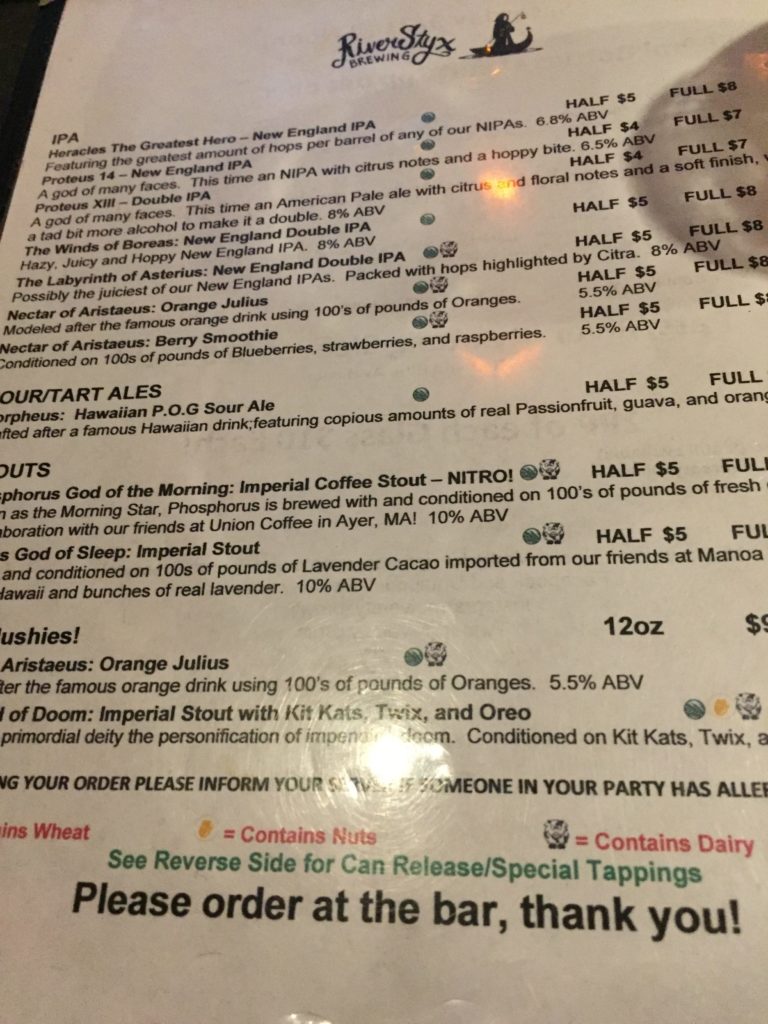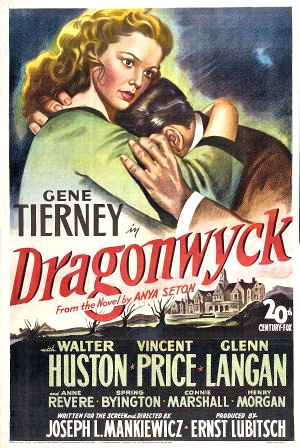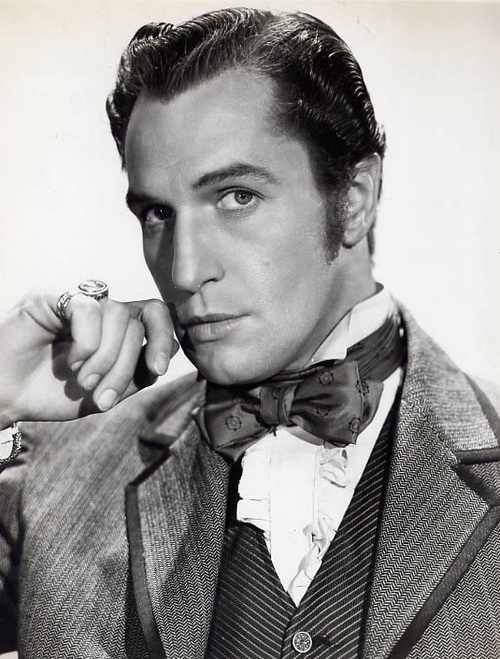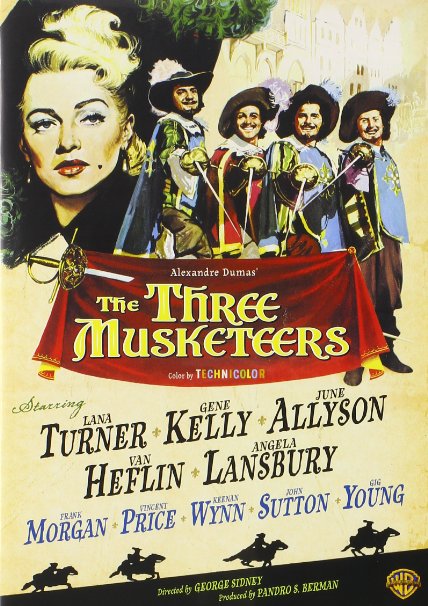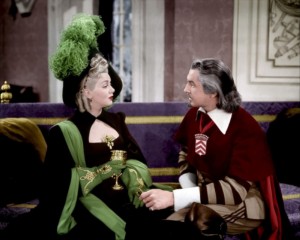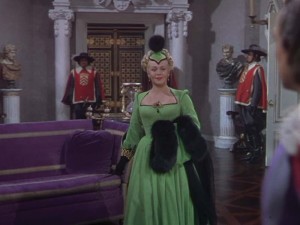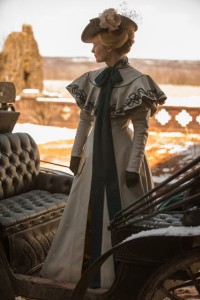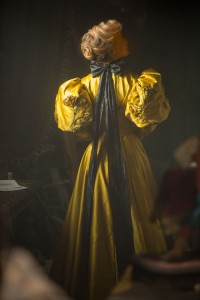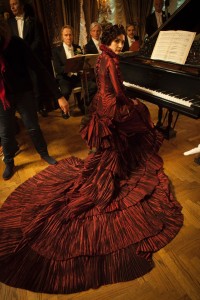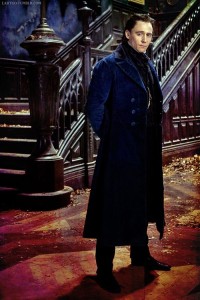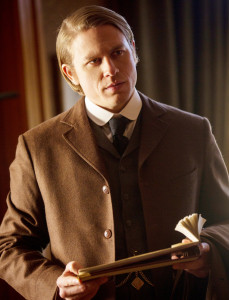Long time, no write! I’ve been delinquent in my duties for a long time, but let me get this one out so I can go on with my life.
Knife Skills
I started off September right: with knives! Sadly all they let me knife was some vegetables, because this was a culinary knife skills class at the local technical school. You might have been forgiven for thinking otherwise, considering it was taught by a certain Sue Brassard — a local chef, bearing no resemblance to the Shadowvale game owner. That Sue, as I joked, knows lots about knifing unsuspecting PCs, but she doesn’t usually advertise her skills.
Anyway, it was a very educational evening! We started with holding the knife, knife honing vs. sharpening, and some easy cuts, like chiffonade and mince. Then we moved onto the more difficult stuff — fine dice, brunoise, and fine brunoise, rendering some poor carrots into “carrot confetti”, as not-that-Sue called it. We ended with more reasonably-sized dices, as well as specific approaches to slicing onions and shallots.
All in all? I was surprised how well I did. I feel like a lot of the things we talked about — how honing is not the same as sharpening, how you should hold your fingers on your off-hand to push the food into the knife, how to do a chiffonade, how to peel garlic — I’ve learned from cooking shows. (Maybe the original Good Eats?) I also have a small amount of professional kitchen experience, from when I was working at the Adirondak Loj and had to sub in as prep cook.
And when it came time to do the difficult cuts, I was actually pretty decent at them. I couldn’t produce brunoise cuts at speed, certainly, but my table-mate kept expressing astonishment that I was managing to — slowly — create 1/8″ cubes of carrot.
My biggest struggle, as ever, was onions. I seem to be really, really sensitive to their volatile oils. At home I have kitchen goggles just for this, as I’ve learned none of the other ridiculous remedies work. (Yes, even that one you’re thinking of right now. I’ve tried them all). At the class? Not so much. Not-that-Sue kept trying to convince me that sticking my head in the freezer would help, and I eventually gave in. It did help that one time, but I think that had more to do with getting away from the onion.
River Styx Brewing Company
Recently Matt and I visited a local brewery, River Styx Brewing, located in Fitchburg, MA. You might recall that we liked their offerings at the Nashua River Brewer’s Festival, so it was only a matter of time until we made it there in person!
We sampled a flight of their offerings, and ended up coming home with three “crowlers.” That was a new term to me — it’s basically a 32oz pop-top can. In some ways I like that better than growlers, since the beer will stay fresh much longer while closed… but it also means you have to drink it all in one sitting, once you’ve opened it.
The crowlers were:
- Hypnos, God of Sleep, a lavender chocolate Imperial double stout. I can’t stop raving about how good this is — and I don’t even favor stouts! Both the lavender and the chocolate come through exceptionally well, and I was surprised how well that floral note paired with the richness of the stout.
- Morpheus: Hawaiian P.O.G, a sour ale featuring passionfruit, orange, and guava (hence the name). This is similar to the one they had at the Fitchburg festival, but this one hadn’t been aged on candy. Was not as fruity as I would have hoped, but still imminently drinkable.
- Nectar of Aristaeus: Berry Smoothie. This was a milkshake IPA made with “hundreds of pounds” of berries. The fruit did quite a lot to mellow our the bitterness of the hops.
They also had Thanatos — which we’d sampled at the festival — on tap, but it was unavailable in crowlers. I’m told they sometimes sell it in cans, so here’s hoping!
The Big E
I finally got to The Big E this year — the Eastern States Exposition, basically a state fair for all of New England. (Thus fulfilling another goal on my 101 Goals in 1,001 Days list!) They offer a “$6 after 5” admission deal on weekdays, so I took a half day on a random Wednesday and met EB in West Springfield.
One of the interesting things about the fair is that lots of local people rent out their driveways for parking, often for much cheaper than the official fair parking. I ended up paying $5 to park on the lawn of some really sweet people on York Street, who invited me to sit on their deck and have a beer. (I declined).
Once inside, EB showed me around the various state pavilions. In the CT pavilion, they were shucking oysters and giving them away for free, so I had one of the best oysters I’ve ever had. I did some early Christmas shopping and bought some ice cider in the Vermont house, ate some apple cider donuts in the MA pavilion, and took a picture with a bear in the NH house.
We also visited Storrowtown, the 19th century village they’ve recreated, looked at baby goats in one of the agricultural barns, and ate a famous eclair from the 4H building and admired the cross-stitch work there.
Oh, and I ate a late dinner of poutine on the midway, which was possibly one of the less exciting things I could eat there. (But still delicious).
It was fantastic, and I just wish I could have visited for longer! I barely scratched the surface of everything there is to do there.
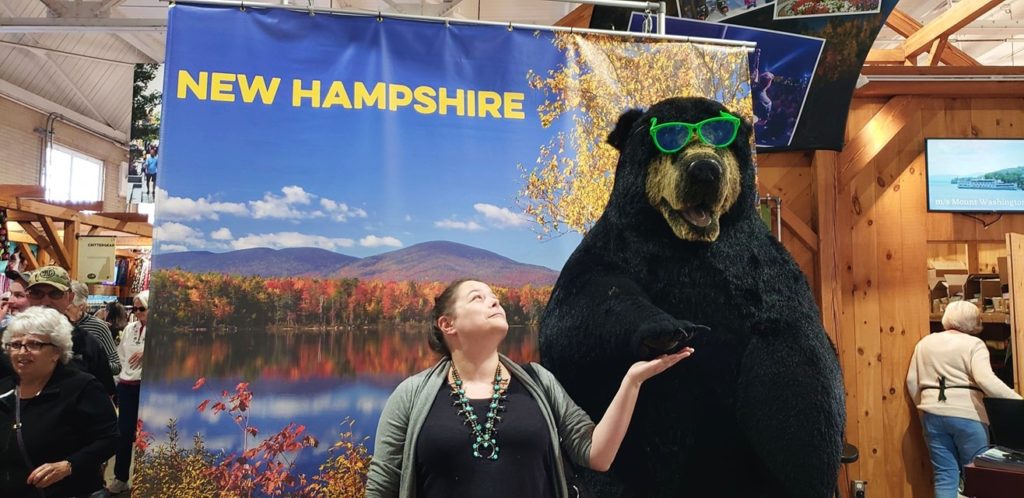
Bathroom Renovations
… are done! I’m absolutely thrilled with how everything turned out. I haven’t yet taken a bath in my new tub, but I am looking forward to doing so!

Mirror hasn’t been installed in this picture, but it has since been! 
Showing off the lovely tile work in the shower 
… and the shower niche. 
More of the countertop and sink.
ESO
I’ve been playing a lot of ESO lately, and I wrote about my impressions of the latest expansion.
I’ve been doing more stuff lately with Feline Good Meowporium, the trade guild I’m in. I really enjoy the trial group they run on Tuesdays and Sundays, even though I can’t always join. I haven’t been able to heal much, because there are two dedicated healers who always scoop those roles up, but I’m enjoying dpsing with Falanu again. Last week we did normal Cloudrest+2, and veteran Hel Ra Citadel. The latter was a first for me, and now I have that Ra Kotu bust for my house.
Speaking of housing, I am working on an overly ambitious design for FGM’s Halloween housing contest. How overly ambitious? Well, let’s just say it involved buying a house that cost one million gold, and printing out maze designs. The deadline to enter is October 21st, and I have to be done by October 28th — we’ll see if I can pull something together in that time…
Reading
I’ve started a bunch of books, but haven’t finished many lately.
I’m currently reading Black Powder War, the third in Naomi Novik’s Temeraire series, which so far is interesting, but far too easy to put down. I’m entertained that once again my choice of SFF reading has taken me to an alternate-history Istanbul 😉
In search of some, ahem, adult literature, I found myself reading Lidiya Foxglove’s Queen of the Sun Palace series, a spicy m/f fantasy romance with an interesting power exchange dynamic, which lists as inspiration both Sleeping Beauty and the life of Marie Antoinette. I thought was fun, at least, and very much My Thing, but it has some unusually hostile reviews on Goodreads and Amazon, so I figure it’s not everybody’s cuppa. Anyway, I just finished the second book, and I know just enough about the real life Marie Antoinette and the French Revolution to wonder how this can possibly end well…
Matt and I have also been working our way slowly through the Audible Original performance of Treasure Island, which is fantastic, featuring the voices of Daniel Mays and Catherine Tate, among others.
I’ve also been picking at S.T. Joshi’s biography of Lovecraft, which I had apparently read a chunk of before? I didn’t remember how much Joshi forces his opinions on the text, but wow, he sure does. I usually agree with his conclusions, but sometimes he says things like “Lovecraft thought all poetry after Yeats is crap, and I agree,” and I have to kind of side-eye the both of them.
Watching
As I’ve written about on Facebook, I decided to dive headfirst into the wide, wild world of (the new-ish) Doctor Who. Previous to this, the only thing I’d seen of it was the famous “Five Doctors” episode of the original show.
This all started with a craving for more David Tennant, after enjoying him so much as Crowley in the Good Omens series. I asked my friends if I could start watching with his 10th Doctor, and the answer was mostly, “yes, but you might as well watch the 13 episodes of Christopher Eccleston first.”
So I started watching from the (new) series one, and found, to my surprise, that I liked many of the episodes. After years of railing against the popularity of this series, it actually quite entertained me! Though, as I said on Facebook, I feel it’s best when it’s a human interest story, and doesn’t delve too much into the science — because let’s be real, there’s not much science behind an alien with thirteen lives who travels through time in a sentient blue deus ex machina.
The best part of this has been watching in tandem with EB, sharing our snarky comments over Messenger. She’s a big fan of the series, and she’s going through a tough time right now, so it’s been a great way to connect with her at a distance, while getting additional info on the show. I post most of our best exchanges on FB, but here is one that still makes me giggle, shared during “The Empty Child,” i.e. gas mask aliens during the Blitz plus introduction of Jack Harkness episode.
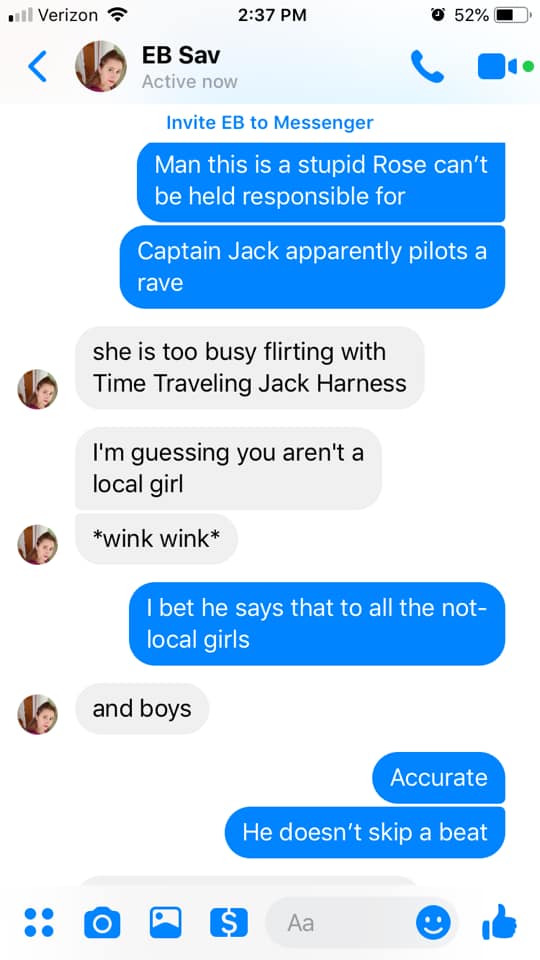
Now we’re on to the Tennant series, i.e. my original reason for watching, and I’m liking him quite a lot! I’ve heard it’s pretty normal to imprint on your first Doctor, so I’ll probably always have a soft spot for Eccleston, but on the whole I found the adjustment to Tennant pretty easy. It helps that he’s nice to look at 😉
The other thing I’ve been watching lately, in keeping with the season, is Vincent Price films. We have a selection that we own that we watched every year (House of the Long Shadows, The Abominable Dr. Phibes, Madhouse, the episode of The Muppet Show that Price was on, etc), but we also check each year to see if Netflix/Amazon have any new offerings. That was how we ended up watching The Cry of the Banshee, which… I do not recommend. There is a whole lot of rape and women screaming, not mention losing their shirts for absolutely no reason.
Last night, in keeping with this theme, I re-watched Dragonwyck with my friend Jess. You might recall I reviewed this one when I first watched it. Jess made an interesting observation about the length of the shots in this 1940s movie — modern movies rarely have shots longer than 7 seconds, but this movie often lingers for 30 seconds or more. Fascinating!
Larp
I continue to PC Shadowvale and NPC Madrigal 3.
Matt recently took up a role as staff on Mad3, which means he’s going to be busy with that, although my role should stay about the same.
I have to start thinking about what game I want to play after Shadowvale ends, which is closer than I realized — only five events remain! My most likely candidate is Cottington Woods 2, probably with some variation on the character I had meant to play in the first campaign: Galina, a witch and herbalist loosely inspired by Baba Yaga. I’m not nearly as invested in being a healer in my next game, though, so I’ll have to figure out how to do that within the witch header.
On the freeform/interactive literature front, I’ll be heading to Mythic Consequences in the UK in November, and the weekend-long game Tutankhamun: Evil Under the Egyptian Sun in Retford, UK, in February 2020. I’ll also be returning to Intercon this year, and actually just proposed a game! (Not my own: The Drinklings, a Nordic-ish game that I played at Consequences last year).
That said, Matt and I have decided to skip Consequences in 2020 (and probably the 2021 weekend-long game), just due to how expensive the bathroom renovation has been.
And that’s all I have to say for now! Not exactly bite-sized, but this is what happens when I don’t post for a while.


